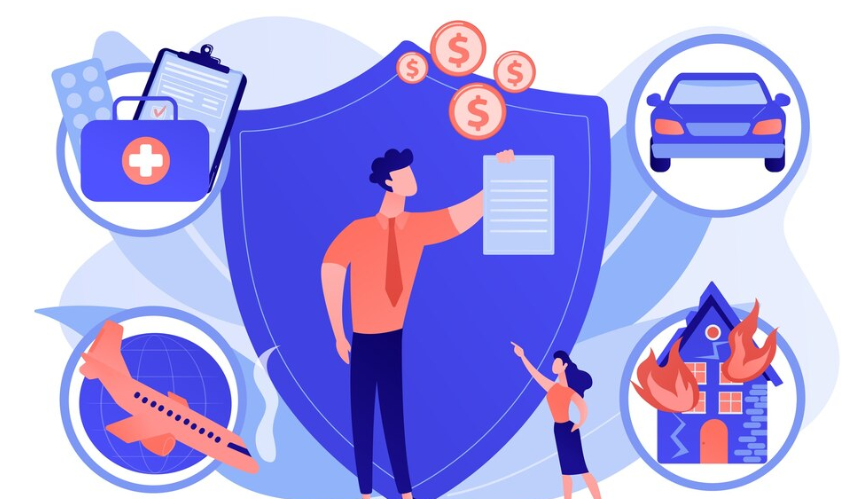Introduction
Insurance is one of the most important safety nets you can have for your home, health, car, or business. However, having the right amount of coverage is key to ensuring that you’re adequately protected in the event of an emergency or loss. Many people settle for the bare minimum coverage required by law or recommended by their insurer. But what if you could upgrade your coverage for maximum protection? In this article, we’ll walk you through how to assess your current insurance coverage and make the necessary upgrades to ensure you’re fully covered.
1. Assess Your Current Coverage Needs
Before upgrading your insurance coverage, it’s crucial to evaluate your existing policies. Understand what you’re currently covered for and whether it aligns with your current situation and future needs.
1.1. Review Your Current Policies
Start by reviewing your current insurance policies (homeowners, auto, life, health, etc.). Look for any exclusions or gaps in coverage that could leave you vulnerable. Check if your coverage limits are sufficient and whether your premiums reflect the level of protection you actually need.
1.2. Identify Potential Risks
Consider any life changes or increased risks that might affect your coverage needs. For instance:
- New Property: If you’ve purchased a new home or car, your old policy might not cover it fully.
- Major Life Changes: Marriage, the birth of a child, or retirement can increase or decrease your insurance needs.
- Business Expansion: If you own a business, any growth or changes to operations may require additional coverage.
1.3. Consult with an Insurance Agent
If you’re unsure about what additional coverage you may need, an insurance agent can help assess your risk and offer recommendations. They can walk you through the specifics of your current policies and provide insight into potential coverage gaps.
2. Upgrade Your Homeowners Insurance
Your home is likely one of your largest investments, so it’s essential to ensure it’s fully protected. Homeowners insurance upgrades can protect you from financial hardship in the event of property damage, theft, or natural disasters.
2.1. Increase Dwelling Coverage
If the value of your home has increased (due to renovations or market appreciation), consider raising your dwelling coverage limits to ensure you can fully rebuild in the event of a total loss. Make sure your dwelling coverage reflects the cost of rebuilding rather than just the market value of your home.
2.2. Add Coverage for High-Value Items
Standard homeowners insurance often has coverage limits for valuables like jewelry, art, and collectibles. If you own high-value items, you may want to purchase a rider or endorsement to ensure they’re fully covered. This could apply to jewelry, rare art pieces, antiques, or expensive electronics.
2.3. Consider Flood and Earthquake Insurance
Most homeowners insurance policies don’t cover damage from floods or earthquakes. If you live in an area prone to these natural disasters, adding flood or earthquake insurance is crucial for maximum protection. These policies can help cover repair costs and losses that would otherwise be unaffordable.
2.4. Increase Liability Coverage
Liability coverage protects you if someone is injured on your property or if you accidentally cause damage to someone else’s property. You may want to increase your liability limits to cover medical expenses, legal fees, and settlements in case of an accident.
3. Upgrade Your Auto Insurance
Car accidents can be costly, both financially and emotionally. By upgrading your auto insurance, you can ensure you’re adequately protected in the event of an accident, theft, or other vehicle-related incidents.
3.1. Increase Liability Coverage
State minimum liability coverage may not be enough to protect your assets if you’re at fault in an accident. Increasing your liability limits can ensure that you’re covered for medical expenses, repairs, and legal fees in case of an accident.
3.2. Opt for Comprehensive and Collision Coverage
While liability insurance covers damages to others, comprehensive and collision insurance protect your own vehicle. Collision insurance covers repairs to your car after an accident, while comprehensive covers damages from incidents like theft, vandalism, or natural disasters. These upgrades are especially important for newer or high-value cars.
3.3. Add Uninsured/Underinsured Motorist Coverage
If you’re involved in an accident with someone who doesn’t have enough insurance or no insurance at all, uninsured/underinsured motorist coverage can help pay for your medical bills and repairs. This is an important upgrade if you live in an area with a high number of uninsured drivers.
3.4. Consider Roadside Assistance and Rental Car Coverage
Upgrading your auto insurance to include roadside assistance and rental car coverage can be beneficial if you’re frequently on the road. Roadside assistance can provide help in case of a breakdown, while rental car coverage ensures you’re not left stranded without a car if your vehicle is in the shop after an accident.
4. Upgrade Your Health Insurance
Health insurance is essential for protecting your well-being and minimizing financial risk in the event of illness or injury. If your current plan isn’t meeting your needs, it may be time to consider upgrading your coverage.
4.1. Switch to a Higher Coverage Plan
If your current health insurance plan has high deductibles or limited coverage, consider switching to a plan with lower out-of-pocket costs and more comprehensive coverage. A plan with better benefits, including more specialized care or a wider network of doctors, may be worth the investment.
4.2. Add Supplemental Insurance
Supplemental insurance policies can provide additional coverage for specific needs not covered by your primary health insurance plan. Common options include:
- Dental Insurance: Often not included in standard health plans, dental insurance can help with the costs of routine care, fillings, and orthodontics.
- Vision Insurance: If you need regular eye exams or glasses, a vision plan can help cover those costs.
- Critical Illness Insurance: This coverage provides financial support if you’re diagnosed with a serious illness, such as cancer or heart disease.
4.3. Increase Your Prescription Drug Coverage
If you’re taking medications regularly, upgrading your prescription drug coverage can help reduce your out-of-pocket expenses. Look for plans that offer better coverage for your specific medications or explore assistance programs that help with drug costs.
4.4. Consider Health Savings Accounts (HSAs) or Flexible Spending Accounts (FSAs)
Health Savings Accounts (HSAs) and Flexible Spending Accounts (FSAs) can help you save for medical expenses. These accounts allow you to set aside pre-tax dollars for eligible medical costs, providing a financial cushion for healthcare expenses.
5. Upgrade Your Life Insurance
Life insurance provides financial protection for your loved ones in the event of your death. If you want to ensure that your family is well-supported after you’re gone, upgrading your life insurance can provide them with maximum protection.
5.1. Increase Your Coverage Amount
As your life circumstances change, your life insurance coverage needs may increase. If you’ve had children, taken on more debt, or experienced other major life changes, you may need to increase your coverage amount to ensure your family is adequately supported.
5.2. Switch to Permanent Life Insurance
Term life insurance provides coverage for a set period (e.g., 20 years), but permanent life insurance (such as whole life or universal life insurance) offers lifelong coverage and may build cash value over time. Switching to a permanent life insurance policy can provide long-term financial security and a financial asset that grows over time.
5.3. Add Riders for Additional Protection
Many life insurance policies offer optional riders that can enhance your coverage. Common riders include:
- Accidental Death Rider: Provides additional benefits if death occurs due to an accident.
- Critical Illness Rider: Offers financial support if you’re diagnosed with a serious illness like cancer or heart disease.
- Disability Rider: Provides benefits if you’re unable to work due to a disability.
6. Upgrade Your Business Insurance
If you own a business, upgrading your business insurance is essential for protecting your company from unexpected risks. Whether you own a small startup or a large corporation, having the right coverage is crucial for success.
6.1. Increase Property Coverage
As your business grows, so do the assets you need to protect. Consider upgrading your property coverage to include more assets, such as new equipment, inventory, or office space.
6.2. Add Business Interruption Insurance
If a disaster or other incident forces you to close your business temporarily, business interruption insurance can cover lost income and help with ongoing operating costs while your business is being repaired.
6.3. Consider Cyber Insurance
If your business relies on digital data, cyber insurance can protect you from data breaches, hacking, and cyberattacks. This coverage helps pay for the costs of responding to a cyber event, including notifying customers and covering lost revenue.
6.4. Increase Liability Coverage
Business liability insurance protects you if a customer or third party is injured or their property is damaged due to your business operations. Increasing your liability limits can provide greater protection against legal claims and lawsuits.
Conclusion
Upgrading your insurance coverage is essential to ensure that you and your assets are fully protected. By reviewing your current policies, understanding your specific risks, and considering additional coverage options, you can maximize your protection and provide peace of mind for the future. Whether you’re upgrading your homeowners, auto, health, life, or business insurance, taking the time to make informed decisions will ultimately save you from potential financial hardships down the road.

